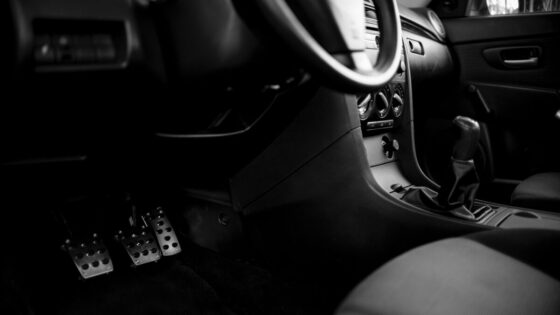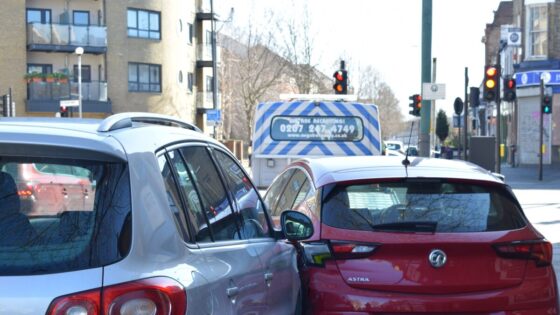Drive with Confidence: Exploring the Latest Car Safety Technologies

Cars have become an integral part of modern life, allowing us to travel further and faster than ever before. However, with increased mobility comes an increased risk of accidents, which is why car safety technologies are so important. In this article, we will explore the latest car safety technologies that can help drivers stay safe on the road.
Active Safety Technologies
Active safety technologies are systems that are designed to prevent accidents before they occur. These systems use sensors, cameras, and other technologies to monitor the environment around the vehicle and alert the driver if a potential danger is detected. Some examples of active safety technologies include electronic stability control, automatic emergency braking, and lane departure warning.
Electronic stability control, also known as ESC, is a system that helps drivers maintain control of their vehicle in emergency situations. ESC uses sensors to detect when a vehicle is about to lose control, and then applies the brakes to individual wheels to help the driver regain control.
Automatic emergency braking, also known as AEB, is a system that automatically applies the brakes when a potential collision is detected. AEB can help prevent accidents in situations where the driver may be distracted or unable to react quickly enough. Here is a good an example of how the AEB system works in practice:link
Lane departure warning is a system that alerts the driver when the vehicle begins to drift out of its lane. This technology can help prevent accidents caused by driver fatigue or distraction.
The benefits of active safety technologies are clear. According to the National Highway Traffic Safety Administration (NHTSA), vehicles equipped with ESC have 33% fewer single-vehicle crashes and 18% fewer multiple-vehicle crashes than those without it. Similarly, vehicles with AEB have 50% fewer rear-end crashes than those without it.
Real-world examples of how active safety technologies have saved lives or prevented accidents are plentiful. In one case, a Tesla Model X driver in California was alerted by the car’s automatic emergency braking system and was able to avoid a collision with a pedestrian. In another case, a driver in Michigan was alerted by the car’s lane departure warning system and was able to avoid colliding with a vehicle in the adjacent lane.
Graphs and charts illustrating the effectiveness of different active safety technologies are also available. For example, the Insurance Institute for Highway Safety (IIHS) has a rating system for vehicles equipped with AEB, which shows that vehicles with the highest-rated AEB systems have significantly fewer crashes than those without it.
Here is real life example how car safety technologies save lives: link
Passive Safety Technologies
Passive safety technologies are designed to protect vehicle occupants in the event of a collision. Unlike active safety technologies, which aim to prevent accidents from occurring in the first place, passive safety technologies work to minimize the damage caused by accidents.
Examples of passive safety technologies include airbags, seat belts, and crumple zones. Airbags are designed to inflate quickly and provide a cushion for occupants in the event of a crash. Seat belts are a crucial component of passive safety systems, as they keep occupants securely in their seats during an accident. Crumple zones are areas of the vehicle that are designed to deform during a crash, absorbing much of the energy of the impact and reducing the force experienced by vehicle occupants.
The benefits of passive safety technologies are significant. According to the National Highway Traffic Safety Administration (NHTSA), seat belts saved an estimated 14,955 lives in the United States in 2017. In the same year, frontal airbags saved an estimated 2,790 lives.
Real-world examples of how passive safety technologies have saved lives or prevented accidents are numerous. In one notable case, a man in Michigan survived a high-speed collision thanks to his car’s airbags and seat belts. The man’s vehicle was struck by another car at a speed of approximately 70 mph, but he suffered only minor injuries thanks to the passive safety systems in his car.
Diagrams can be used to illustrate how specific passive safety technologies work. For example, a diagram of a seat belt assembly can help drivers understand how the belt locks and keeps them in place during a crash.
Advanced Driver Assistance Systems (ADAS)
Advanced Driver Assistance Systems (ADAS) are a newer category of car safety technologies that are designed to assist drivers in operating their vehicles. These technologies include features such as adaptive cruise control, lane departure warning, and blind spot monitoring.
Real-world examples of how ADAS technologies have saved lives or prevented accidents are also numerous. In one notable case, a Tesla Model 3 driver in California credited the car’s Autopilot system with preventing a crash. The driver reported that the car’s automatic emergency braking system activated when a car cut in front of him, preventing a collision.
It is important to note the differences between active and passive safety technologies. While passive safety technologies work to minimize the damage caused by accidents, active safety technologies aim to prevent accidents from occurring in the first place. For this reason, active safety technologies are often considered to be more important than passive safety technologies.
You can to discover more about ADAS read our article: link , But here is a comparison chart highlighting the differences between active and passive safety technologies:
| Active Safety Technologies | Passive Safety Technologies |
| Work to prevent accidents before they occur | Designed to protect occupants during and after an accident |
| Examples include electronic stability control, automatic emergency braking, and lane departure warning | Examples include airbags, seat belts, and crumple zones |
| Uses sensors, cameras, and other technology to detect potential dangers and alert drivers or intervene automatically | Do not require any action from the driver to be effective |
| Requires power and technology to function | Do not require power or technology to function |
| Can be found in newer vehicles and are becoming more common | Have been standard in vehicles for many years |
| Have been shown to be effective in preventing accidents and reducing injuries and fatalities | Have been shown to be effective in protecting occupants during accidents |
| Can be expensive to repair or replace if damaged in an accident | Can be less expensive to repair or replace if damaged in an accident |
Testing and Validation of Safety Technologies
Before safety technologies can be used in production vehicles, they must undergo extensive testing and validation. This process helps to ensure that the technologies are effective and safe.
There are several types of tests that safety technologies undergo, including crash tests, computer simulations, and real-world testing. Testing and validation equipment includes tools like GM Future Roads, which is used to simulate real-world driving conditions, Humanetics Active Safety Test Equipment, which is used to test safety systems in crash scenarios, and VBox 3i ADAS, which is used to measure and evaluate ADAS performance.
Organizations such as the NHTSA and IIHS play an important role in testing and evaluating safety technologies. These organizations conduct independent tests and provide ratings and safety scores for vehicles.
Testing and validation have led to significant improvements in safety technologies over time. For example, the introduction of electronic stability control in the early 2000s helped to reduce the number of single-vehicle crashes by approximately 34 percent.
Importance of Choosing Safe Vehicles for New and Teenage Drivers
Choosing a safe vehicle is essential for all drivers, but it is especially crucial for new and teenage drivers who lack experience on the road. According to the National Highway Traffic Safety Administration (NHTSA), motor vehicle crashes are the leading cause of death for teenagers in the United States. Therefore, it is crucial to prioritize safety when selecting a vehicle for a new or teenage driver.
Some important car safety features to consider when choosing a vehicle for a new or teenage driver include:
- Electronic Stability Control (ESC): ESC helps the driver maintain control of the vehicle by reducing the risk of skidding or losing control during sudden turns or maneuvers.
- Anti-lock Braking System (ABS): ABS prevents the wheels from locking up during sudden braking, which can help the driver maintain control of the vehicle and avoid collisions.
- Forward Collision Warning (FCW): FCW uses sensors to detect the distance between the vehicle and the object in front of it. If the distance becomes too close, the system will warn the driver to take action to avoid a collision.
- Blind Spot Warning (BSW): BSW uses sensors to detect vehicles in the driver’s blind spot and alerts the driver if they attempt to change lanes.
- Backup Camera: A backup camera provides the driver with a clear view of the area behind the vehicle, helping to prevent accidents when reversing.
- Airbags: Airbags are a passive safety feature that can help protect occupants in the event of a collision.
- Seat belts: Seat belts are the most critical safety feature in any vehicle. They help keep occupants secure during sudden stops or collisions, reducing the risk of injury or death.
When it comes to specific vehicle models that are safe for new or teenage drivers, there are several options. The BMW 3 Series, Honda Civic, and Subaru Impreza are just a few examples of vehicles with high safety ratings.
The BMW 3 Series is a luxury car that comes equipped with advanced safety features, including a rearview camera, forward collision warning, and automatic emergency braking. The Honda Civic is a reliable and affordable vehicle that also includes advanced safety features such as lane departure warning, adaptive cruise control, and road departure mitigation. The Subaru Impreza is a compact car that comes with all-wheel drive, making it an excellent option for drivers who need extra stability on the road. It also features a rearview camera, automatic emergency braking, and lane departure warning.
When selecting a safe vehicle, it is essential to consider the specific safety features included in the model. Photos of the vehicle with annotations highlighting important safety features can be helpful in making an informed decision.
Common misconceptions about car safety for new and teenage drivers include thinking that bigger vehicles are always safer, assuming that new cars are always safer than older ones, and assuming that all safety features are created equal. It is essential to research specific safety features and models to make an informed decision.
FAQ
Not necessarily. While larger vehicles may offer more protection in some situations, they can also be more challenging to maneuver and more prone to rollovers.
The age of the vehicle is not as important as the safety features included. It is possible to find safe used vehicles with advanced safety features, but it is essential to research the specific model and year to ensure that it meets safety standards.
While luxury cars often come with advanced safety features, they can also be more expensive to repair or replace in the event of an accident. It is essential to consider the cost of ownership in addition to the safety features when selecting a vehicle for a teenage driver.
Some of the most important safety features to look for in a car include airbags, electronic stability control, anti-lock brakes, and backup cameras. It is also important to look for cars with high crash test ratings from reputable organizations like the National Highway Traffic Safety Administration (NHTSA) and the Insurance Institute for Highway Safety (IIHS).
Yes, passive safety technologies can be just as effective as active safety technologies in preventing injuries and saving lives. While active safety technologies are designed to prevent accidents from happening, passive safety technologies work to minimize the damage in the event of an accident. Both types of safety technologies are important in keeping drivers and passengers safe on the road.
While ADAS technologies have shown to be effective in preventing accidents and saving lives, it is important to note that not all ADAS technologies are created equal. Some technologies may work better than others, and it is important to do research and choose a car with reliable ADAS technologies. It is also important to remember that ADAS technologies are designed to assist drivers and should not be solely relied upon to prevent accidents.
Yes, testing and validation of safety technologies can lead to improvements over time. By identifying weaknesses and areas for improvement, safety technologies can be enhanced to become more effective and reliable. Additionally, advancements in technology can lead to new safety features and technologies that can further improve the safety of vehicles on the road.
One common misconception is that bigger and heavier cars are always safer. While larger cars may offer more protection in some types of accidents, they may also have poorer visibility and handling, making them more difficult to drive safely. Another misconception is that newer cars are always safer than older cars. While newer cars may have more advanced safety features, older cars can still be safe if they are well-maintained and have good safety ratings. Finally, some may believe that aggressive driving is necessary to be a safe driver, but in reality, defensive driving techniques and following traffic laws are key to staying safe on the road.



